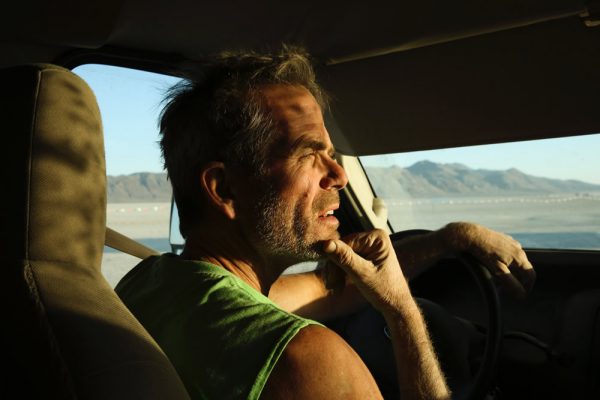
Earth Day is pretty special. And pretty lame too that we need to bring into focus on a single day what sustains us on the daily. Kind of like reminding us to acknowledge the one we love with a bouquet on Feb. 14. Not to mention cards for mom and dad on their own special days.
While some of these arbitrary dates are no doubt Hallmark confections, Earth Day does have a special provenance. It began in 1970 as a protest against the 1969 Santa Barbara oil spill, which killed thousands of sea birds, dolphins, seals, and sea lions. What with the latest spill right off our coast, it doesn’t much seem like we’ve heeded the call. Corporations still rule the roost.
Yet, somewhat miraculously, this little protest-that-could has become an international movement. In 2009, the United Nations designated April 22 as International Mother Earth Day.
And last week even Indian Prime Minister Narenda Modi jumped on the bandwagon, declaring “Earth Day is about expressing gratitude to Mother Earth for her kindness and reiterating our commitment to care for the planet.” This from the man who in the rush to industrialize his nation has obliterated environmental protections and poisoned enormous tracts of land.
But let’s quit the greenwashing for a moment and talk reality. Here in Laguna, we are closely integrated with our mother earth. We live amongst coyotes, snakes, rabbits, sea lions, dolphins, whales, and now at least one mountain lion. How lucky we are to be surrounded by such magnificent fauna in such a high-density region. Yet we are wildly removed from the ecosystem that should sustain us, instead relying on others to ship our goods to us. No food production or foraging. No water retention. And certainly, no harvesting of the bounty right in front of us—our protein-rich Pacific.
Earth Day took on a special meaning for me in 2017. That winter began after a failed real estate buffoon became ruler of the world. And thoughtful people I knew collapsed into utter despair. Sure, we got out our pink hats and protested. But what a precipitous four-year slide it was anyway.
But that winter of 2017 the rains came. The first in five years, and the last since. It came fast and furious, as if to wash away the bile, the foul stench that our unabating faith in country had been shaken. That Satan himself had prevailed to rip open and reveal our lowest selves.
But then, one by one, the flowers came. Eventually by the millions. And flourished all over the southland, hijacking acres upon acres with a breathtaking canvas of pointillist delight. I crisscrossed the region, knowing it was fleeting, feeling as if I had discovered something monumental in its healing power and reassurance that everything would be ok. After all the terrible things we had done to her, she came back for us. From the poppy reserves in Antelope Valley, to the riotous desert blooms, to the cornucopia of colors in our own coastal sage wonderland. Yellow sunflowers (Encelias) strafed the hills above our homes. Random patches of purple lupine, fuchsia prickly pears, blue phacelia, orange monkeyflower and poppy, bladderpods, deerweed, buckwheat, morning glory, and the cosmic Laguna Beach liveforever graced our hills.
But now, five years later, we ask ourselves, where did those rains go? The earth continues to get hotter and dryer. The movie Don’t Look Up tried to impart the urgent environmental message the only way it knew how—through farcical entertainment depicting us as shallow beings more interested in meaningless entertainment. It was drowned out by the Will Smith slap.
This past Earth Day I took a hike in our coastal wilderness to bear witness and pay homage on this holiest of days. It was beautiful as always, sunny and cool, in the high sixties. Everything had that extra shimmery patina. The air was clean and the hills green from what little rainfall we had. But no blooms to be had. Perhaps they’ll still come. All I saw was giant swaths of that Hitchcockian-looking flower known as the California Dodder. The orange, hairlike parasitic flower that envelops its prey in a web-like stranglehold—primarily buckwheat and white sage. You know it’s sinister-looking when its folk names include scaldweed, beggarweed, fireweed, wizard’s net, devil’s guts, hairweed, hellbine, strangleweed, and witch’s hair.
Thankfully, I was assured by our own “coastal sage,” Laguna Canyon Foundation’s Hallie Jones, that Dodder is an indigenous bloom that doesn’t harm its host and is part of a naturally recurring cycle.
But I try to unlock the metaphor, the ominous portent of such a menacing-looking beast, the dichotomy of luminous rebirth versus vicious attack on an innocent host. I’m no Nostradamus, but what could it mean post Trump that the only species of flower to flourish has to choke out another species? Or could the message be one of hope, interdependence, and symbiosis, that we survive on the backs of each other? I choose the latter, because of course, hope springs eternal.
Billy hosts Laguna Talks on Thursday nights on KXFM radio. He’s also the CEO of La Vida Laguna, an E-bike and ocean sports tour company. Email: [email protected].





I find myself agreeing with Mr. Fried and sharing many of his concerns expressed here. Has hell frozen over?
Agree Mike. Could it be because he finally got off his Blake-like sarcastic bashing of longtime locals and VL soapbox?
To be honest, I stopped reading his rah rah developer-driven column. Only tuned in because I saw your response. Thanks. Worth the read.